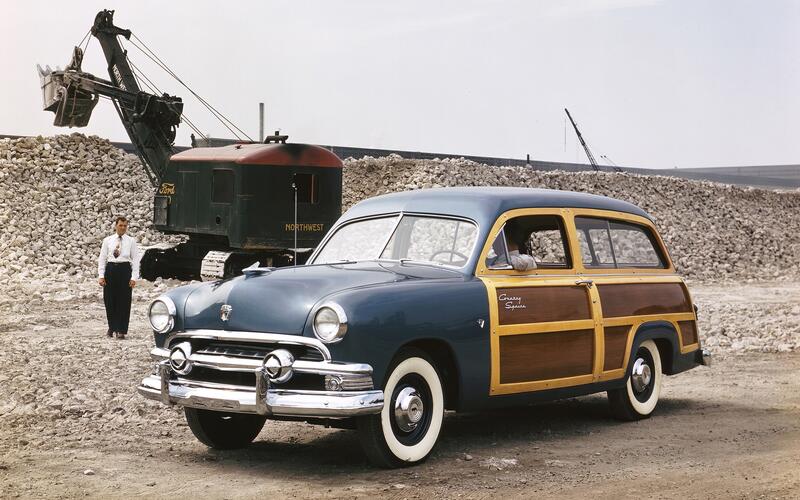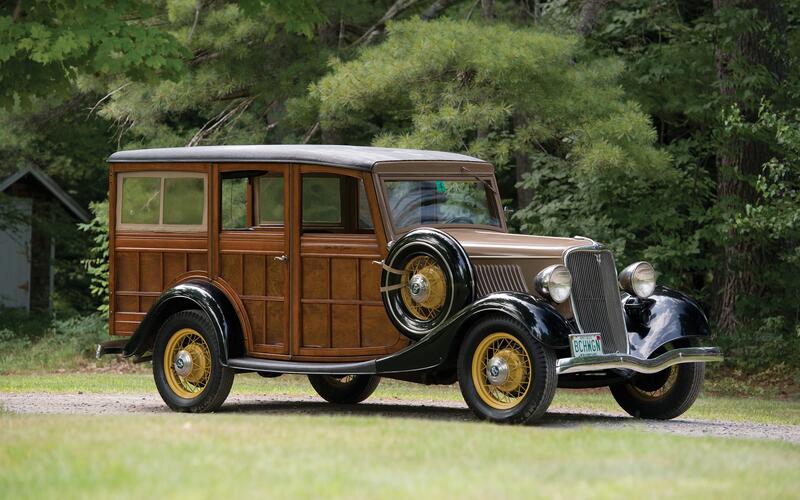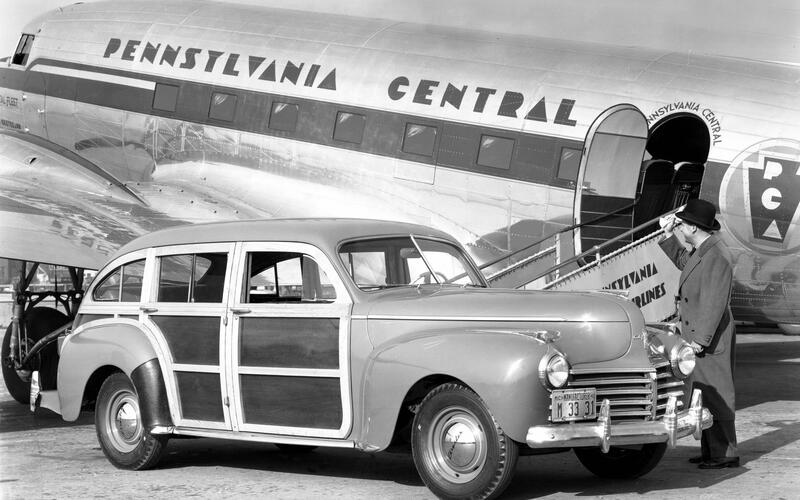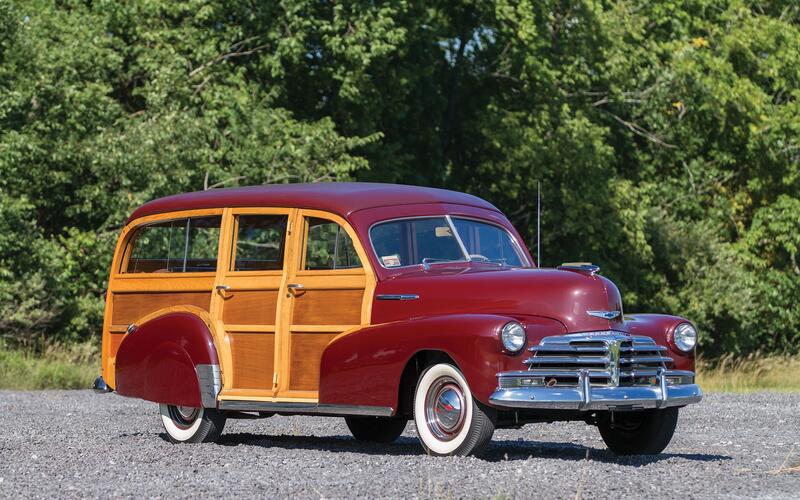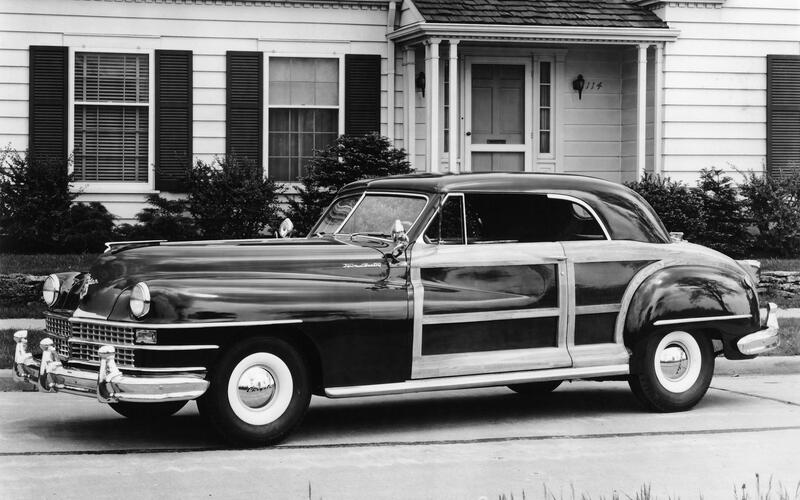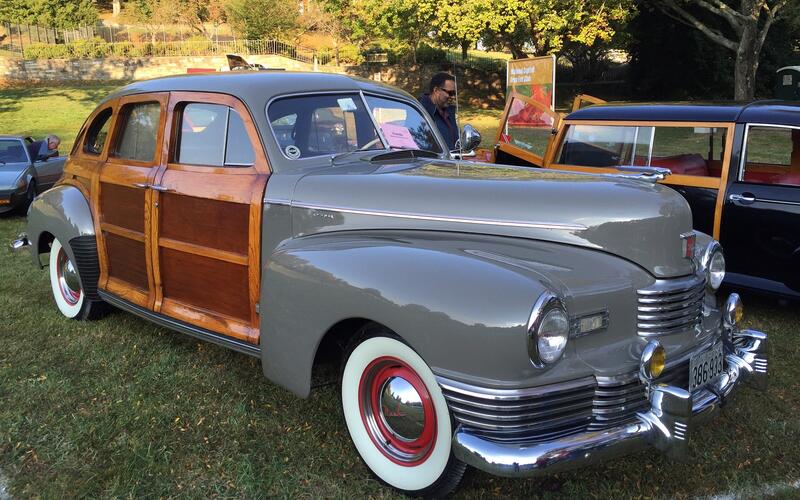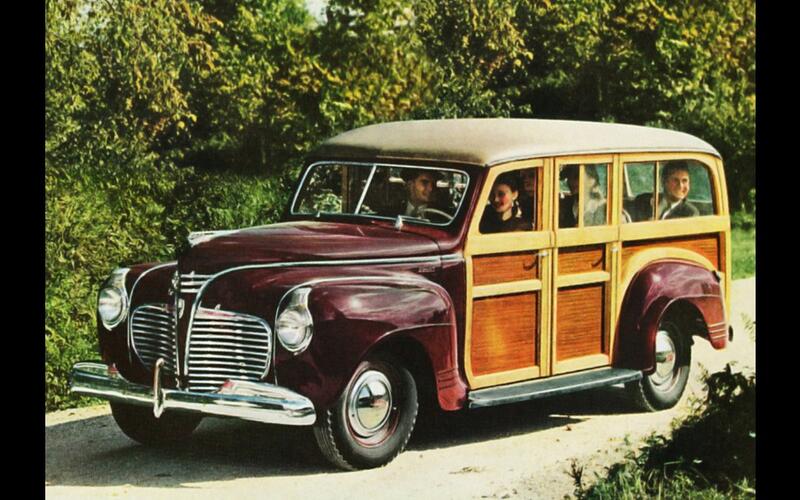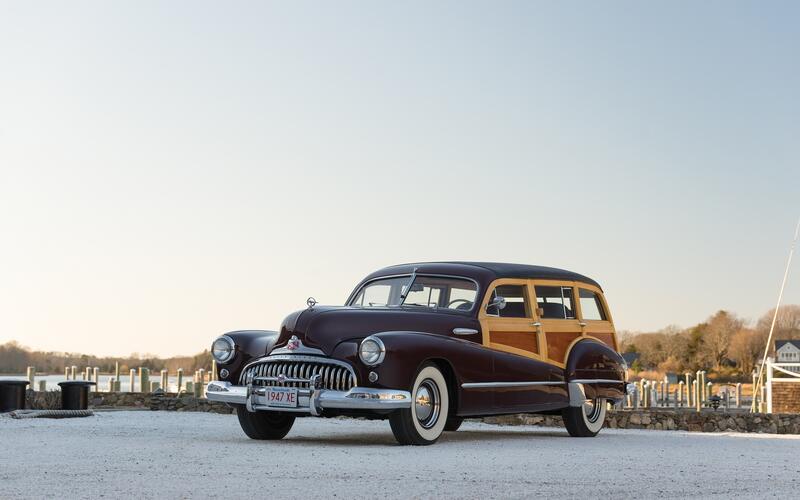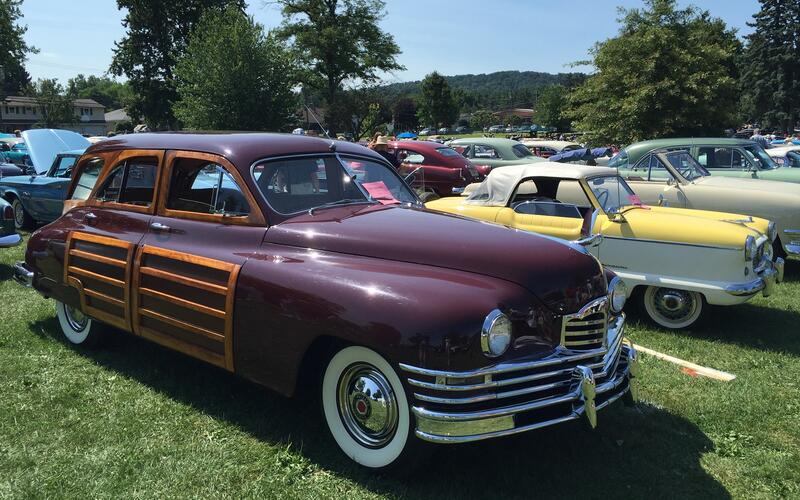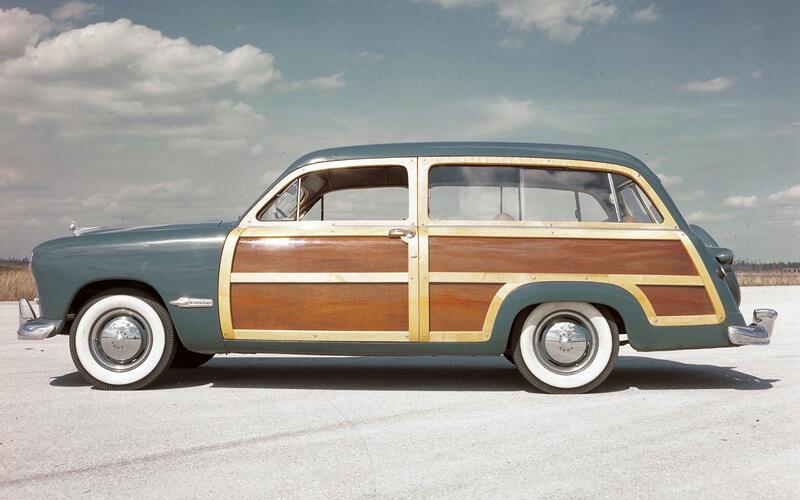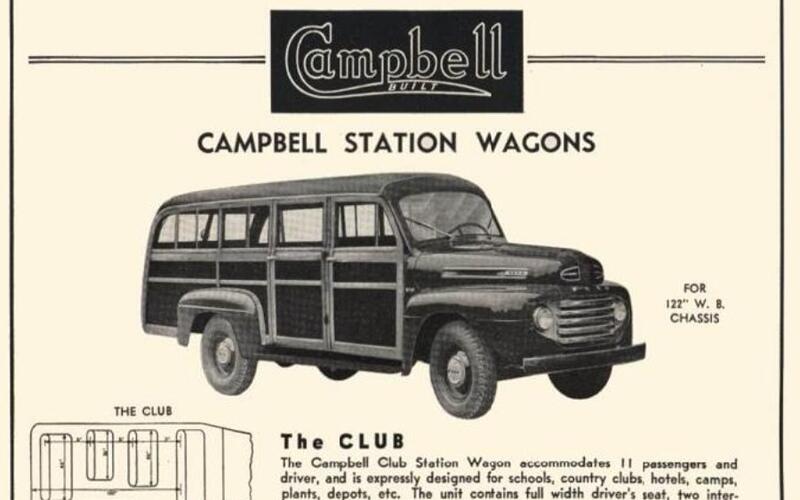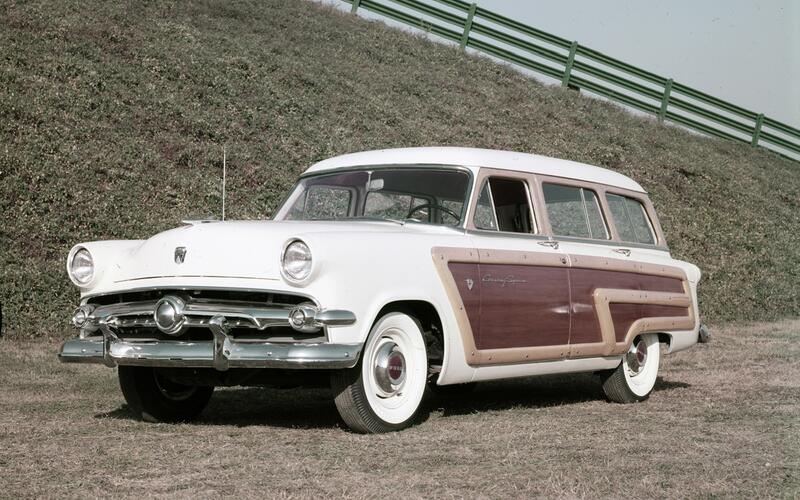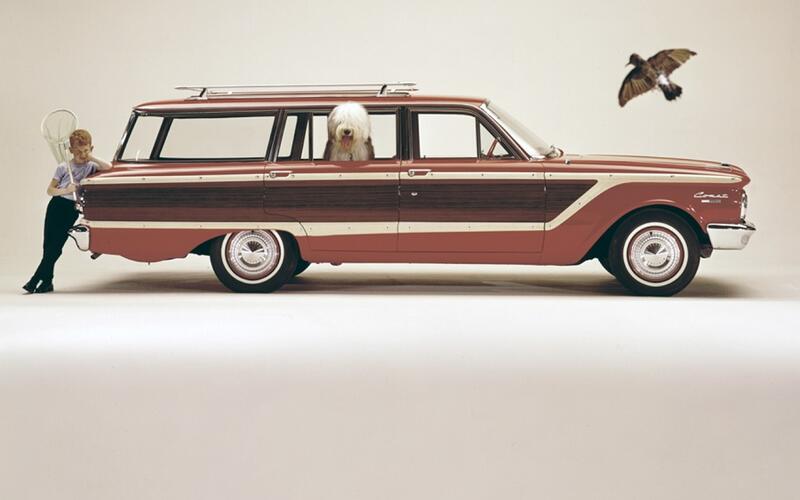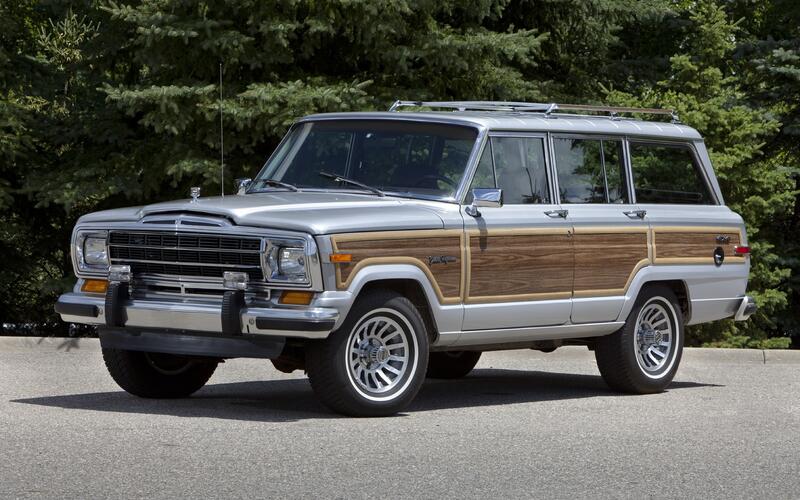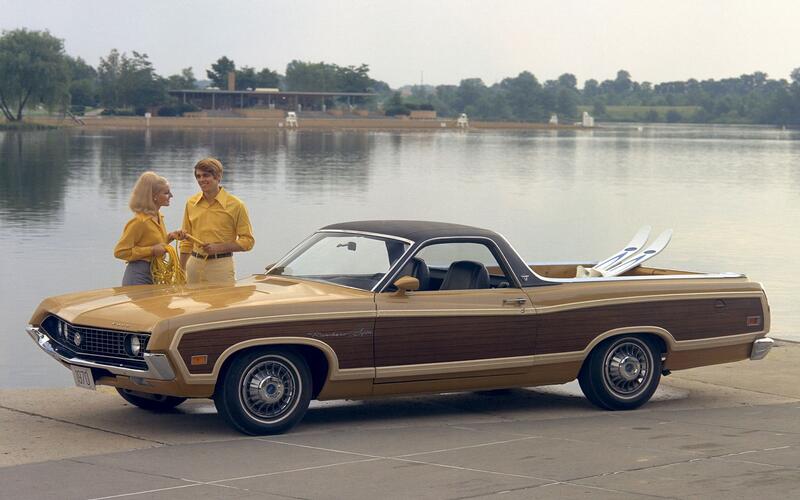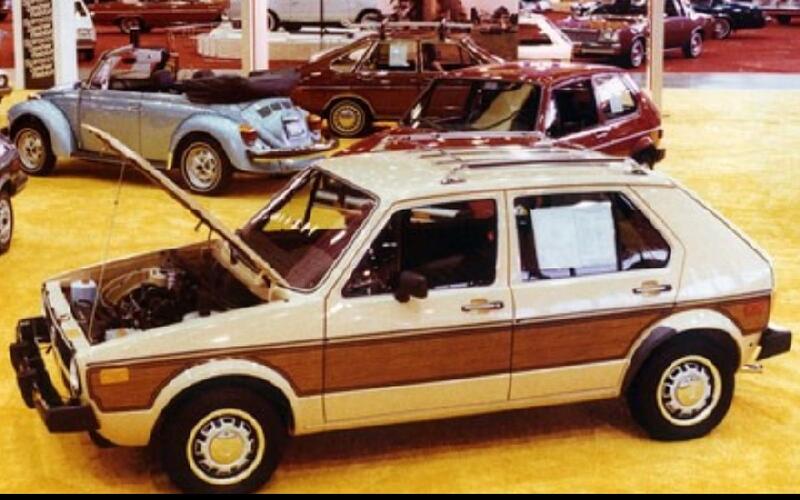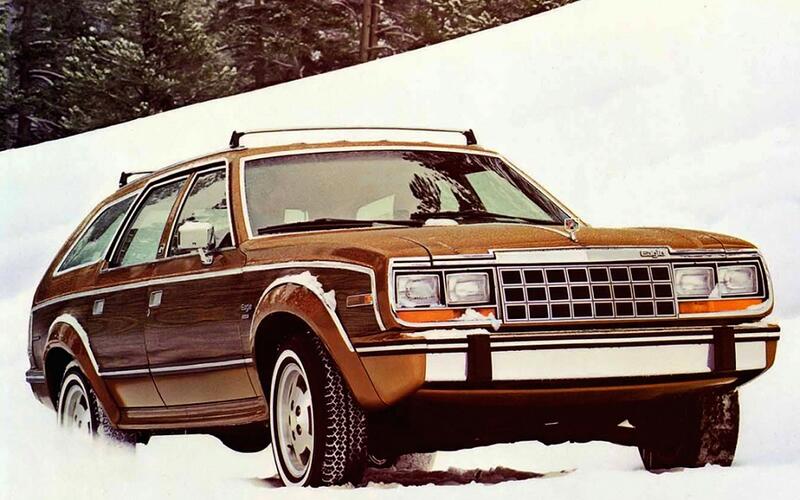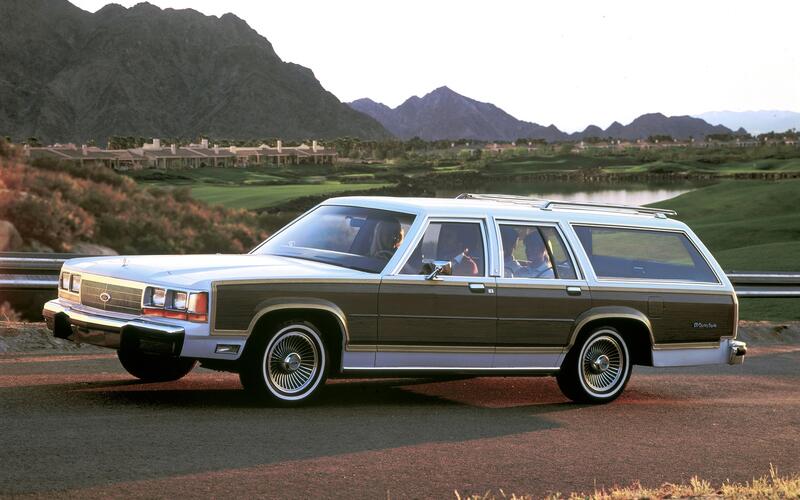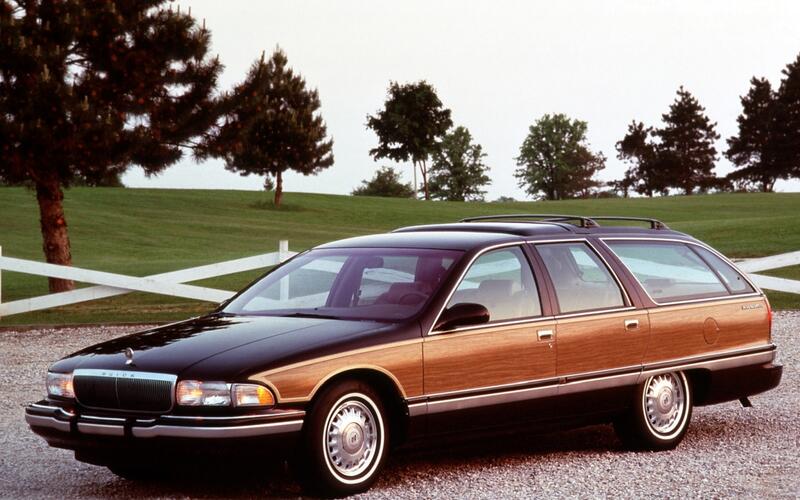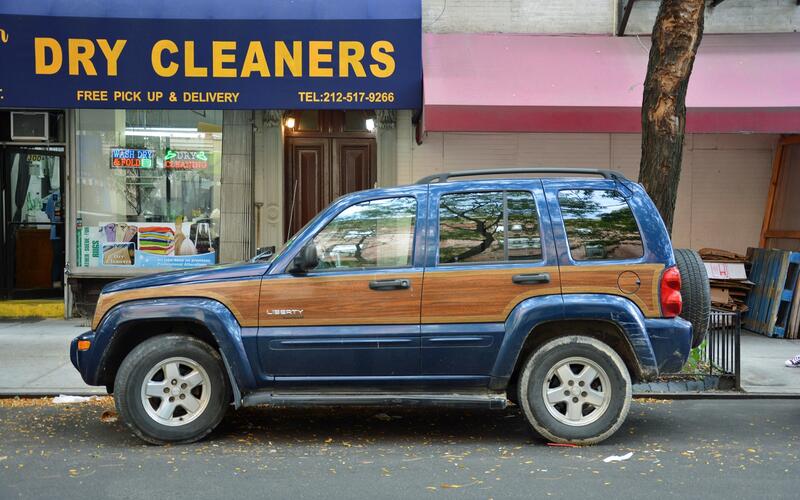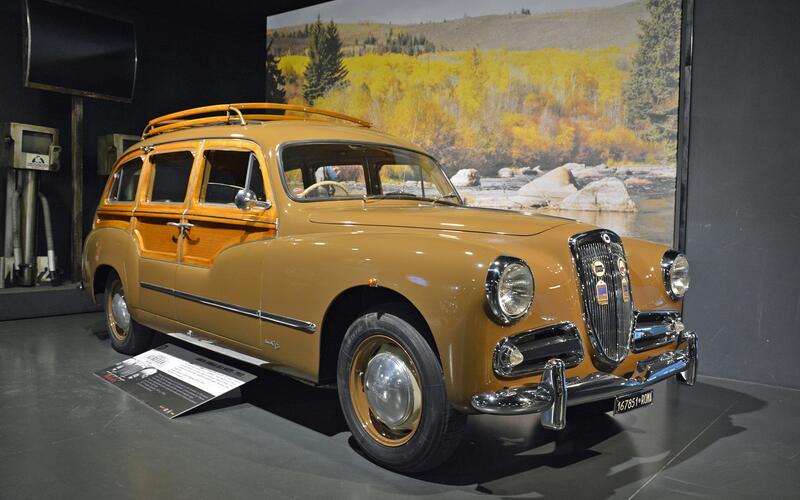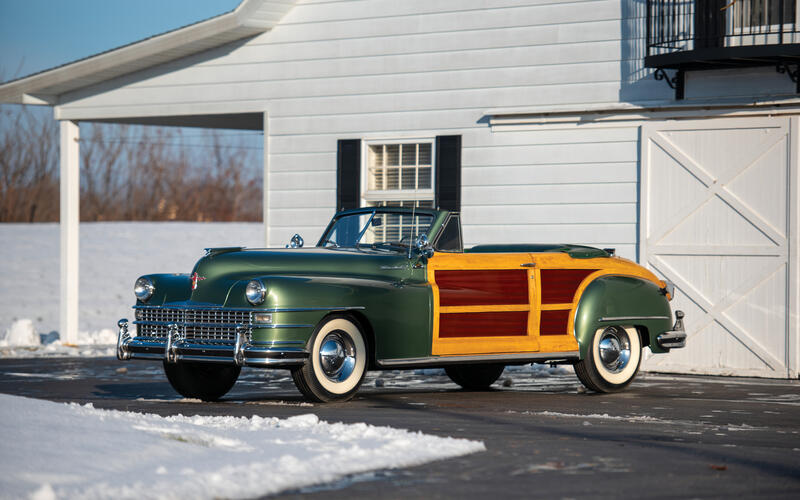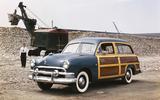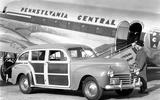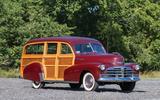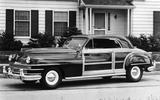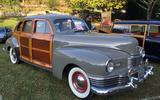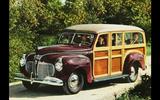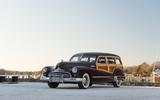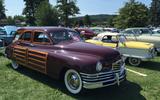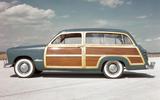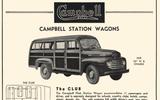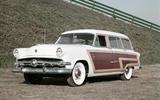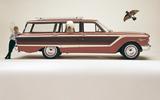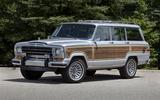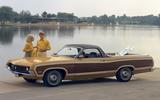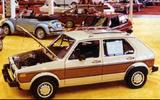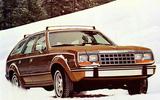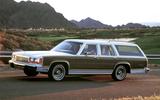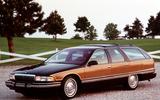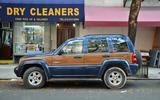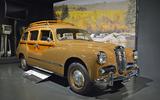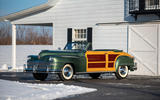 Slide of
Slide of
In its truest form, the woody bridged the gap between horse-drawn carriages and cars.
Coachbuilders with decades of wood-working experience found it easier and cheaper to create a new body for, say, a Ford Model T with ash and mahogany than with steel. The end result was eye-catching, solid and relatively durable if properly maintained, though it wasn’t without downsides. Steel ultimately made wooden bodies obsolete but wood-like paneling became wildly popular in the 1960s.
Join us for a trip down memory lane as we highlight the greatest woodies made.
 Slide of
Slide of
Ford V8 (1932)
Ford democratized the V8 engine when it launched a 3.6-liter unit in 1932. It powered the Model 18 offered in over a dozen body styles including a roadster, a coupe and a wood-bodied wagon. Designs evolved during the 1930s and nameplates changed but the combination of a V8 engine dropped in a big, family-friendly wagon whose body panels were made of wood spent many years in the Ford portfolio. PICTURE: 1933 model
 Slide of
Slide of
Chrysler Windsor Six Town & Country (1941)
In the late 1930s, Chrysler president David Wallace wanted to take the firm into the station wagon segment without creating a box on wheels. The small team he assembled to work on the project designed a vehicle that blurred the line between a sedan and a wagon. They called it Town & Country, a nameplate they had settled on before designing the car. It had a steel roof, which was unusual for a woody. Buyers could choose between a six- and a nine-seater model when sales started in 1941.
 Slide of
Slide of
Chevrolet Fleetmaster (1946)
Chevrolet introduced the Fleetmaster line for the 1946 model year. The range included a coupe, a convertible, two- and four-door sedans plus an eight-seater wagon that was a true woody because the panels were structural. 804 units were sold during the 1946 model year, a figure that made it the rarest Fleetmaster variant by a long shot. It was also the most expensive; pricing started at $1604, which represents $21,200 in 2020. For context, the coupe cost $1130 (around $15,000). PICTURE: 1948 model
 Slide of
Slide of
Chrysler Town & Country (1946)
World War II prematurely ended the original Chrysler Town & Country’s production run. The nameplate returned for the 1946 model year but it denoted either a four-door sedan or a two-door convertible. The wagon didn’t make a comeback. Woody production continued through the 1950 model year.
Chrysler used the Town & Country nameplate on steel-bodied models for decades, including some fitted with woodgrain trim. The name then denoted an upmarket version of the Voyager minivan starting with the 1990 model year. It received woodgrain-like panels on the side and rear, too.
 Slide of
Slide of
Nash Ambassador Suburban (1946)
Nash added wood to 1000 examples of the Ambassador between 1946 and 1948. Called Suburban, the range-topping model received mahogany panels embedded into an ash frame. The wood wasn’t structural; Nash installed it to give the Ambassador a more dapper look.
 Slide of
Slide of
Plymouth Special Deluxe Six (1946)
Chrysler-owned Plymouth introduced its first post-war models in early 1946. It split its line-up into two basic models called Deluxe Six and Special Deluxe Six, respectively. The Deluxe Six was cheaper and consequently only offered in four body styles but the Special Deluxe Six range included six different variants. The wood-bodied wagon was positioned at the top of the range and priced accordingly.
 Slide of
Slide of
Buick Roadmaster (1947)
Ionia Manufacturing helped Buick add a wagon to its flagship Roadmaster range for the 1947 model year. It wasn’t the company’s first woody but it was one of its best-looking wagons. The wood panels perfectly complemented the shapely, drawn-out fenders. By this point, making wood parts by hand cost more than stamping steel and the Roadmaster wagon was Buick’s most expensive car.
It cost $3249 in 1947, which represents nearly $38,000 in 2020. 300 units were made that year. Buick also offered a smaller, cheaper wagon also made with Ionia-supplied panels.
 Slide of
Slide of
Packard Station Sedan (1948)
Likely inspired by Chrysler’s Town & Country, the Packard Station Sedan released in 1948 was positioned at the intersection of wagons and sedans. It allowed the company to offer a more spacious car without designing a long-roof model from scratch. The birch panels installed on the doors and around the windows were decorative; only part of the tailgate structurally depended on wood.
Packard didn’t break down its sales by body style and historians disagree about how many units of the Station Sedan were made between 1948 and 1950. Most estimates lie in the vicinity of 4000.
 Slide of
Slide of
Ford Custom Six/Custom V-8 (1949)
Ford introduced the 1949 models that turned around its fortunes in 1948. The base trim level wasn’t offered as a station wagon but buyers willing to step up to a six- or eight-cylinder Custom model could order a long-roof model with two doors and wood paneling on the sides. It wasn’t Ford’s first woody (far from it) but it’s the model that spent decades celebrated as the segment’s poster child. It’s often depicted with a surfboard or two attached to its roof on various t-shirts and other souvenirs.
 Slide of
Slide of
Coachbuilt woodies (1950s)
Woodies were rarely produced in significant numbers because the manufacturing process was extremely labor-intensive. The ones we’ve highlighted so far were regular-production models sold by a major car brand. The panels weren’t always built in-house but anyone could walk into, say, a Plymouth dealership and order a Special Deluxe Six. That’s just one part of the woody story.
The more obscure side of the sector gravitates around the coachbuilders (like Campbell; pictured) that specialized in making one- or few-off woodies. These weren’t sleek sports cars or luxurious sedans; they were often pickup trucks converted into school buses or people-carrying buses. Production figures are generally largely lost to history and very few of these special builds are left in 2020.
 Slide of
Slide of
The real woody’s decline (1950s)
Woodies fell out of vogue during the late 1940s. Steel-bodied cars were cheaper and easier to build and buyers preferred them because they looked more modern. Chevrolet and Pontiac last offered a woody during the 1949 model year. Plymouth (which sourced wooden bodies from U.S. Body & Forging) went all-steel for the 1951 model year. Buick kept the woody alive for longer than most: the straight-eight-powered Roadmaster kept its Ionia-sourced wood trim until the 1953 model year.
And then, something odd happened: wood quickly made a comeback. American companies gradually started offering some of their cars with thin decorative wood (and, later, fake wood) panels that were usually installed on the door panels, below the belt line. PICTURE: 1954 Ford Country Squire
 Slide of
Slide of
Mercury Comet (1960)
The number of cars available with either real or fake wood paneling during the 1950s and the 1960s is too long to list. Some came standard with it while others offered it as an extra-cost option. Most were wagons, which upheld a long-standing tradition, but automakers weren’t afraid to put woodgrain trim on other body styles. The Mercury Comet (which Ford originally developed for its ill-fated Edsel division) was one of the best-looking ones, partly because the trim perfectly matched the car’s lines.
 Slide of
Slide of
Jeep Wagoneer/Grand Wagoneer (1962)
No car, truck or SUV wore wood panels better than the Jeep Grand Wagoneer. It wasn’t designed with woodgrain trim in mind, the first Wagoneer built in 1962 didn’t have it, but Jeep added the feature in the 1970s to create a visual link between its bulky SUV and family-friendly wagons. The pieces were originally narrow and installed right below the belt line. They got wider and lower over time.
In the 1980s, Jeep offered a posher version of the XJ-generation Cherokee called Wagoneer that received woodgrain trim and its full-size model became the Grand Wagoneer. The original, ZJ-generation Grand Cherokee briefly wore woodgrain trim (and the Grand Wagoneer name), too.
 Slide of
Slide of
Ford Ranchero (1969)
There was no unwritten rule that prevented pickups from receiving woodgrain trim. Ford gave the car-based Ranchero comprehensive updates for the 1970 model year and widened the line-up by adding a trim level named Squire which added woodgrain trim, among other features. It was one of the most expensive Ranchero variants (pricing started at $2965, about $20,000 in 2020).
 Slide of
Slide of
Volkswagen Rabbit (1975)
Woodgrain trim showed up in unlikely places during the 1970s. Volkswagen traveled to the 1979 edition of the Chicago auto show with a four-door Rabbit (sold as the Golf outside of America) fitted with wood-like trim and a chromed roof rack. It almost looked like a scaled down wagon. The hatchback was made in Westmoreland, Pennsylvania, and it differed from the Golf manufactured in Germany in several ways.
The Dodge Omni/Plymouth Horizon twins that competed against the Rabbit were offered with woodgrain trim, too, so Volkswagen wasn’t alone in its quest to bring it to the masses. Production figures remain vague; all we know is that the trim was an extra-cost option in America.
 Slide of
Slide of
AMC Eagle (1979)
AMC took the wood-sided wagon far off the beaten path when it launched the Eagle for the 1980 model year. It was little more than a warmed-over Concord equipped with four-wheel drive but it was a hugely influential model that helped shape the SUV as we know it in 2020. The range included several body styles (including two- and four-door sedans) but the wagon was the most popular one.
 Slide of
Slide of
Ford LTD Country Squire (1979)
Ford introduced the Country Squire name on a real woody in 1950. The nameplate lived on for seven additional generations and all of them were available with either real or fake wood paneling. The eighth and final version of the Country Squire was a family-friendly version of the LTD (later Crown Victoria) driven by a vast majority of taxi operators and police officers in America.
 Slide of
Slide of
Buick Roadmaster (1991)
Buick gave the woody look one last try when it introduced the final Roadmaster for the 1991 model year. Initially only offered as a wagon, it received huge slabs of fake woodgrain trim on both sides and on the tailgate. The sedan introduced during the 1992 model year wasn’t available with wood-look trim.
The 218in-long, V8-powered Roadmaster remained available with woodgrain trim until it retired after the 1996 model year. Its demise marked the end of an era; it was Buick’s last body-on-frame car and its final rear-wheel drive model. The firm returned to the wagon segment after a long hiatus when it introduced the Regal TourX in 2017, but it chose to leave wood paneling in the history book.
 Slide of
Slide of
The 21st century woody
One of the last cars offered with wood paneling was the Jeep Liberty, sold as the Cherokee in most global markets. Jeep tried resurrecting the trend by offering an optional, dealer-installed bundle named Wagoneer Package that added fake wood panels on the SUV’s sides. Very few buyers ordered it.
Chrysler made an option called Woody available on the PT Cruiser, too. It cost $895 for the 2002 model year (about $1300) which led most buyers to think twice about adding it to their car.
 Slide of
Slide of
Europe’s woodies
 Slide of
Slide of
The woody in 2020
In 2020, there is not a single new car offered with wood paneling (whether real or fake) from the factory. England-based Morgan comes close; its Plus Four’s body panels are hammer-pounded into shape over an ash frame, though the chassis underpinning it all is made with aluminum. Woodies have been relegated to t-shirts, mugs, keychains and other trinkets associated with California’s surf culture.
True woodies are highly sought-after by collectors. Auction house RM Sotheby’s sold a 1948 Chrysler Town & Country Convertible in like-new condition (pictured) for $67,200 in 2020. The unrestored 1933 Ford V8 we featured earlier in this story traded hands at a 2014 RM auction for $82,500. It cost about $13,000 when it was new, a figure that made it the most expensive V8-powered Ford that year.
MORE RECENT AUTOCAR STORIES ON MSN:
Rarest models made by major car makers
Strangest car publicity photos ever published
40 years on: The notable new cars of 1980
If you enjoyed this story, sign up to Autocar’s newsletter for all the best car news, reviews and opinion direct to your inbox. Click here to subscribe.
Wood-bodied cars were often the most elegant models in a company's range
Advertisement


